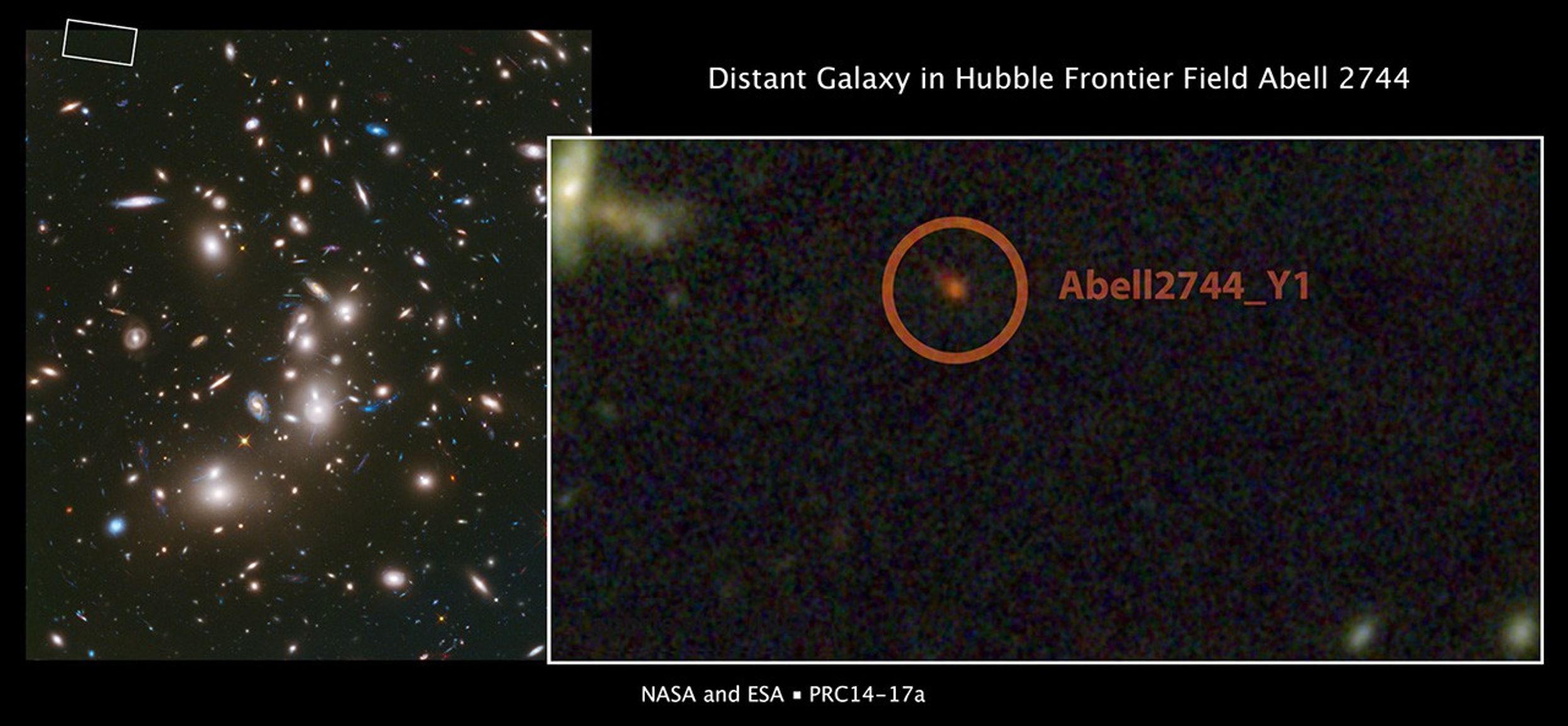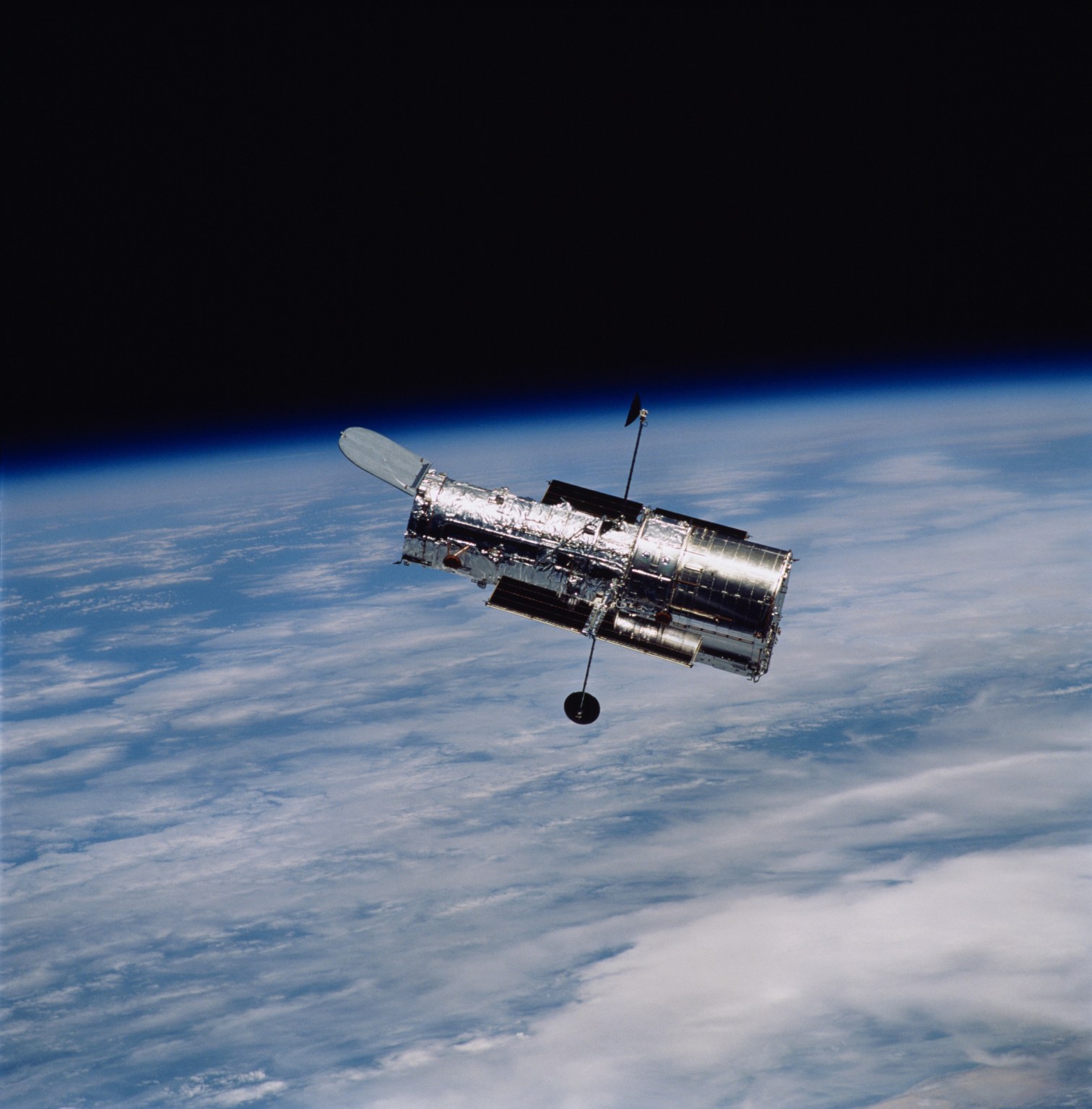An international team led by astronomers from the Instituto de Astrofisica de Canarias (IAC) and La Laguna University (ULL) has just released the first analysis of the observations of the Abell 2744 cluster of galaxies, a coordinated program of the Hubble and Spitzer space telescopes. They have discovered one of the most distant galaxies known to date, which clearly shows the potential of the multi-year Frontier Fields project. The project uses a phenomenon called "gravitational lensing" where select foreground galaxy clusters amplify the faint light from far-more-distant background objects. By combining Hubble and Spitzer data, these astrophysicists have determined the properties of this young galaxy with a better precision than previous studies of other samples at similar cosmic epochs. This galaxy, named Abell2744-Y1, is about 30 times smaller than our galaxy, the Milky Way, but is producing at least 10 times more stars. From Earth, this galaxy is seen as it was 650 million years after the big bang. It is one of the brightest galaxies discovered at such a lookback time, say researchers. This study provides new constraints on the density and properties of the galaxies in the early universe. These results are accepted for publication in the scientific journal Astronomy and Astrophysics Letters.
In addition to the Instituto de Astrofisica de Canarias (IAC) and La Laguna University (ULL), the team is composed of researchers from France (Institut de Recherche en Astrophysique et Planétologie and Centre de Recherche Astrophysique de Lyon), Switzerland (Geneva University and Ecole Polytechnique Federal de Lausanne), and the United States (University of Arizona).































